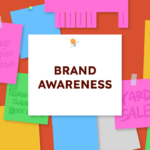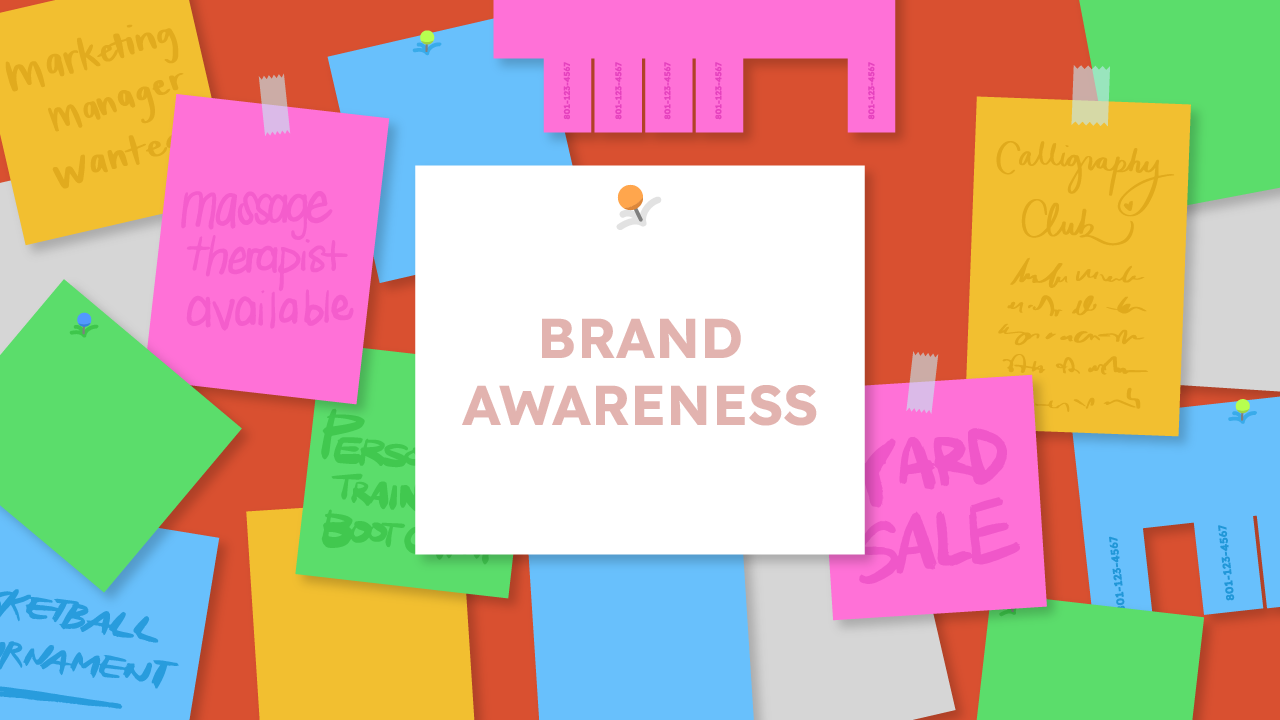With the rise of consumerism in healthcare, the need to differentiate your healthcare organization and the care you provide has never been more important.
When it comes to choosing a provider, today’s patients have more options than ever before and they’re becoming increasingly selective about where they receive care. Building a strong brand and increasing brand awareness is essential for every healthcare provider looking to attract and retain patients.
Whether it’s through effective marketing strategies, reputation management, or developing a strong brand identity, brand awareness in healthcare is key to establishing a foothold in the industry and driving patient acquisition. So how can organizations effectively build brand awareness and stand out in a crowded and competitive market? Let’s start by answering a higher level question first.
What Is Brand Awareness in Healthcare?
Brand awareness in healthcare refers to the extent to which your organization’s name, logo, messaging, and reputation are recognized and remembered by patients and others in the community.
As a patient, think about the healthcare providers you visit. What do you know about their organizations? Do they have a strong presence in the community? What about online? Are they associated with providing great care or is the level of care they provide just so-so? These are all things that healthcare organizations should be trying to positively influence as they build brand awareness.
Effective healthcare branding goes beyond the creation of logos and taglines — it involves creating a strong connection between your organization’s vision and the people it serves. When it’s well-crafted, your brand identity can help you stand out in a crowded market, establish a positive reputation, and ultimately, attract and retain patients.
However, it’s important to bring together all the elements that make up a brand — including visual identity, messaging, and values — in a cohesive system that’s consistently executed across different touchpoints, whether it’s your website, social media, advertising, or even in-person interactions with patients.
Consistent brand awareness in healthcare helps to create a strong and memorable impression on patients and the public, building trust and credibility over time. When patients see the same logo, colors, and messaging across multiple channels, this reinforces your organization’s identity and values, making it easier for them to remember and recognize your brand.
How to Make Your Healthcare Brand Stand Out?
As patients increasingly become more engaged in their own healthcare decisions, having a strong brand helps them feel more confident in their choice of you as their healthcare provider and enhances their overall experience.
So, let’s explore some of the best practices for building a strong healthcare brand identity.
Position Your Brand
 In the constantly shifting healthcare landscape, it’s essential to establish a brand that’s consistent, reliable, and stands out from the competition. To do this, you need to conduct competitive brand research and identify opportunities for differentiation. This involves understanding the competitive landscape in which your brand operates and defining what makes your brand unique.
In the constantly shifting healthcare landscape, it’s essential to establish a brand that’s consistent, reliable, and stands out from the competition. To do this, you need to conduct competitive brand research and identify opportunities for differentiation. This involves understanding the competitive landscape in which your brand operates and defining what makes your brand unique.
There will inevitably be other providers who perform the same procedures so what makes your providers better? These are the types of questions patients are trying to find answers to as they consider and weigh different options when looking for healthcare providers. A key to achieving differentiation and building a strong brand identity is defining your target audience, competitive advantage, and brand promise. By answering these questions purposefully and authentically, you can develop brand awareness in healthcare that resonates with patients and sets you apart from the competition.
Performing market research is an important first step in defining your target audience and understanding their needs and preferences. This can involve conducting surveys, focus groups, and other forms of analysis to gather insights into patient behavior, attitudes, and motivations. Analyzing the competition is essential for identifying opportunities for differentiation and defining your competitive advantage. This includes studying your competitors’ strengths and weaknesses, as well as their marketing and branding strategies.
Next, your unique value proposition is what sets your brand apart from the competition and appeals to your target audience. To define it, consider what specific benefits you offer to patients, what makes your services or care unique, and what makes patients choose you instead of another provider.
Finally, your brand promise is a statement that communicates what patients can expect from your brand, and what makes your healthcare organization different. Before you define it, consider what values and qualities your brand embodies, and how these align with the needs and preferences of your target audience.
Develop Brand Identity
This is a critical component of building brand awareness in healthcare. While healthcare services may only sometimes be entirely unique, a well-crafted brand identity can help differentiate your organization in a crowded, competitive landscape.
To develop a strong brand identity, you may consider different strategies. For example, creating a memorable logo is an essential part of your brand identity. It should be simple, memorable, and reflective of your brand values and personality. Consider working with a professional designer to create a logo that will stand out and be easily recognized by patients.
Next, your color scheme and typography should be consistent across all brand materials, from your website to your office signage and uniforms. Choose colors and fonts that are reflective of your brand values and personality, and resonate with your target audience.
Also, your brand messaging should be consistent with your brand values and personality. Consider how to tailor it to different patient audiences, and how to use it to reinforce your brand identity across all touchpoints.
Create a Narrative Around Your Brand
An important aspect of building brand awareness in healthcare is storytelling. By humanizing your brand and giving it depth, you can create an emotional connection with your patients and establish a deeper sense of trust and loyalty.
One powerful way to create a narrative around your brand is to share stories of patients whose lives have been changed with the help of you and your employees. Showcasing the positive impact that your brand has had on patients’ lives helps you build credibility and inspire confidence. Patient stories can be shared through various channels, including social media, blog posts, and patient testimonials. This, of course, must be done with regard to HIPAA regulations.
At the same time, don’t forget that your employees are a key part of your brand story. Highlighting their expertise, dedication, and commitment to patient care can help reinforce your brand values and mission. Consider featuring provider and employee profiles, calling out their accomplishments and expertise, and sharing stories that showcase their dedication to patient care.
Stay Connected with Your Patients
With more than 191.2 million social media users in the U.S., you have to be where your patients are. There are different ways to stay connected with your patients on social media. For example, posting regularly is essential for staying top-of-mind with your patients. Make sure to include a mix of content, such as educational content, patient stories, or provider profiles, but also post about things unrelated to your services.
In addition, it’s important to interact with your audience to build relationships and establish a sense of community around your brand. Consider asking questions, responding to comments, and sharing or retweeting content that your audience will find interesting or valuable.
At the same time, remember that authenticity is key to building a strong connection with your audience on social media. Avoid overly promotional posts and instead focus on building relationships and providing value to your audience. In other words, treat your social accounts as if you were a person trying to make connections, not a business trying to make money. Above all, make sure you’re following HIPAA guidelines as they relate to these interactions.
Make Sharing Easy
Brand awareness in healthcare is about creating a meaningful connection with your audience by providing value, building trust, and fostering engagement, without solely focusing on financial gain, participation, or loyalty.
Imagine someone seeing that a friend or family member is recommending a treatment or service. Due to the nature of their relationship, they’ll be more likely to take notice and consider further exploring the brand. Maybe they’ll like some of your posts on Facebook. Maybe they’ll want to share what they’ve found with someone else.
When you create content that’s informative, engaging, and relevant to your target audience, your patients will be more willing and interested in sharing it and spreading the word about your healthcare organization, thus helping you build brand awareness in healthcare.
You can encourage them to do this even more in a number of ways. For example, make sure to use eye-catching visuals, hashtags, and calls to action to increase the likelihood of shares. You can also include social media sharing buttons on your website and blog posts to enable patients to share your content on their profiles with just a few clicks. Paid advertising on social media platforms is another way to increase the reach of your content and make it easier for patients to share. With targeted ads, you can reach specific patient demographics who are more likely to engage with your brand and attract new patients to your practice.
Constantly Work on Increasing Patient Loyalty
Ensuring the long-term success of healthcare organizations relies on building patient loyalty. Patients who have a positive experience with your brand are more likely to return for future care, leave positive reviews, and recommend your brand to others.
To foster patient loyalty, you need to understand and prioritize patient satisfaction. A single bad digital experience can ruin the complete experience with a healthcare provider for 50% of healthcare consumers. Think about what makes your patients turn to your brand for multiple care options. What drives them to rave about you in reviews, or leave negative comments?
Make sure to actively seek feedback from your patients. Based on the information you receive, you can personalize the patient experience, build a strong emotional connection with your patients, and increase their loyalty to your brand.
Stay Focused on Patient Experience
With patients as empowered consumers, the benefits of brand awareness in healthcare have grown to the point that you simply can’t afford to ignore them.
Your healthcare branding touches upon all aspects of the patient experience. By creating a brand strategy as a means of being reactive to and proactive for patient needs, you’re able to put people first, establish a strong brand identity, and build patient loyalty. However, enhancing the patient experience is more than just providing high-quality care. It requires a multifaceted approach and attention to each step of the patient journey, from initial contact to follow-up care, to ensure that they feel valued and cared for throughout the entire process.
As you can see, this isn’t an easy feat, and rather than working across multiple platforms to align your healthcare organization with the demands of your patients and stand out from the competition, you can choose a system that can accommodate all your needs. SocialClimb’s platform can help you improve brand perception, ratings, and patient trust. enables you to close the loop and improve patient experiences where necessary. As a result, you can enhance patient satisfaction, increase patient retention and acquisition, and ultimately, ensure the long-term success of your healthcare organization.











